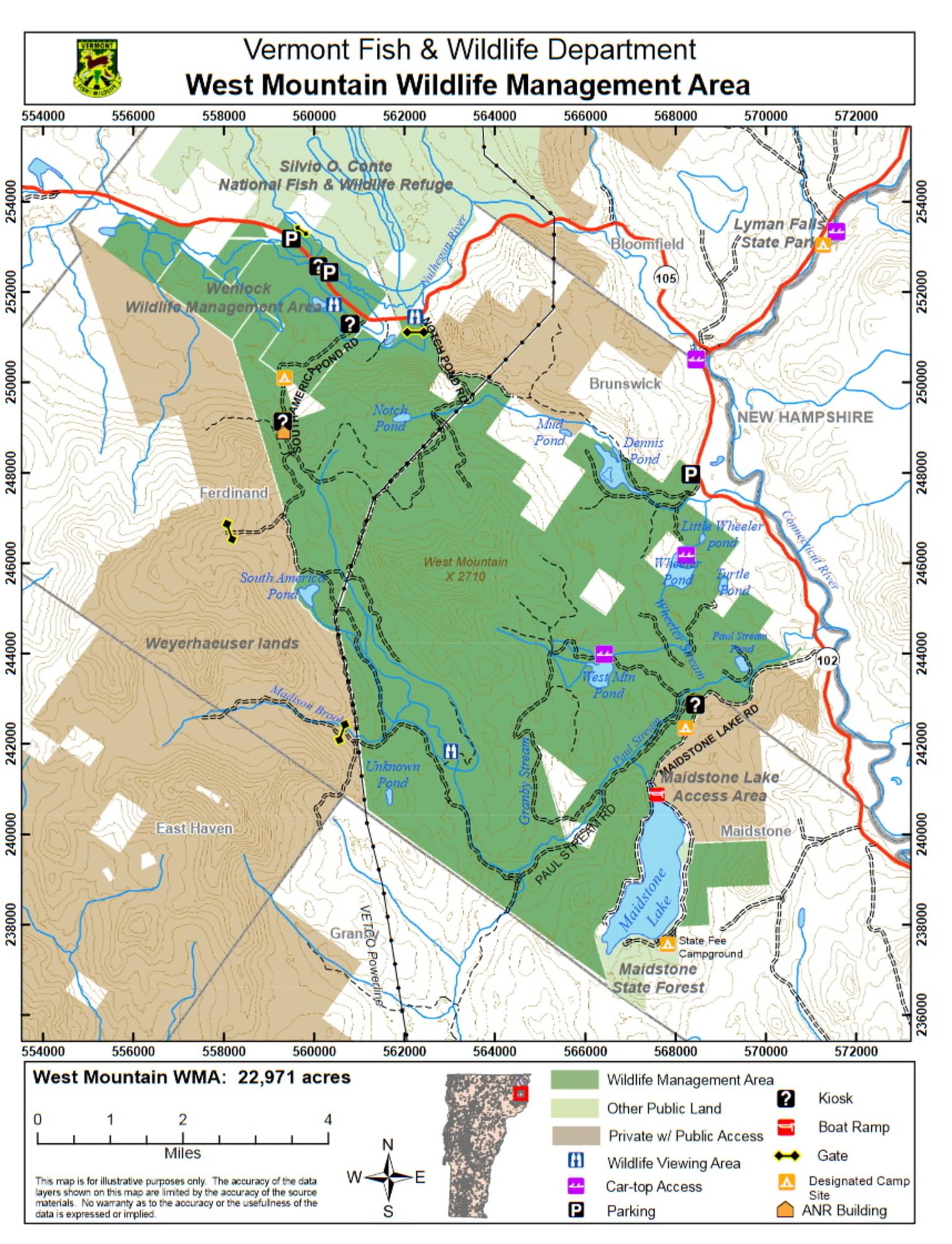
West Mountain Wildlife Management Area
Tips for Birding
West Mountain Wildlife Management Area, Vermont’s biggest wildlife management area, hosts big opportunities to see a wide variety of birds. West Mountain WMA’s 23,000 acres can be circumnavigated along dirt roads, while the interior, including West Mountain itself, is a vast, roadless area that is accessible only by foot. This extensive area of unbroken forest provides an opportunity to see several species that are experiencing population declines elsewhere due in part to habitat fragmentation, such as northern goshawk, wood thrush, Canada warbler, and Swainson’s thrush.
Birds of Interest
The variety of forests and wetlands provides habitats for neotropical migratory birds. Extensive tracts of both hardwood and softwood forests offer nesting habitats for many species that are experiencing population declines due to habitat fragmentation and loss throughout their range.
The many ponds, streams, and beaver impoundments provide habitat for nesting and migrating waterfowl, including Goldeneyes, Ring-necked, Black, Wood, and Mallard Ducks, and Common and Hooded Mergansers.
Common Loons nest on Maidstone Lake and West Mountain Pond and two pairs of Ospreys also nest in the vicinity of these two water bodies. Extensive forested stands of spruce and fir provide critical habitat for boreal species such as the Gray Jay, Black-backed Woodpecker, Boreal Chickadee, and Bay-breasted Warbler.
About this Location
West Mountain Wildlife Management Area (WMA) is a 22,971-acre parcel of land owned by the State of Vermont and managed by the Vermont Fish and Wildlife Department. Located in the towns of Maidstone, Ferdinand, and Brunswick, the WMA ranges north from Maidstone Lake to VT-105 and east from South America Pond to the Connecticut River. Access is available along miles of dirt roads. The main entry points are South America Pond Road off VT-105, and Maidstone Lake and Paul Stream Roads off VT-102.
Elevations on the WMA range from 2,733 feet on West Mountain to 1,100 feet along the lower stretches of Paul Stream. The terrain varies from high-elevation spruce and fir to lowland bogs. The Vermont Fish & Wildlife Department has identified 14 species of plants listed as rare or endangered and eight sites of ecological significance on the WMA. The property encompasses nine major ponds, over 75 miles of streams, and many diverse wetland complexes.
Content from Official Website and Vermont’s Best Birding Hotspots by Vermont Agency of Natural Resources
Last updated December 3, 2023
